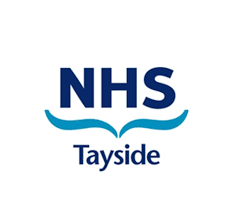
Case Study: Casper at NHS Tayside
Introduction
In the years BC (before Casper) all radiotherapy referrals were hand written on a paper form. Every detail of the planning process and treatment intention had to be annotated. Every few months another question or tick box would be added to the form which became overcrowded with information. Every form was photocopied at least once and there were eight handoff of the form during the booking and waiting time information processes. Forms were often incomplete and could go missing. Every form had to be counted at the end of the year to provide information on consultant numbers and categories of referrals etc. And then were stored for reference.
We often discussed the idea of having an in house electronic referral; our vision was limited to completing our existing form electronically an emailing it. This would probably then be printed out, so there would be no real advantage
Casper has revolutionised the referral process. The main advantage is that the mandatory boxes ensure that all the information is completed before the form is submitted. Before Casper, referrers often had to be sought out to complete missing information. This took time of other staff groups and often delayed the booking process. Forms no longer get lost, as the electronic referral can be made from all peripheral clinics eliminating the need for transporting and handing over of the referral forms on return to base.
The flow of our referral process did not change. The same staff groups are still involved in the same stages as before. We adapted the various functions of the system to suit our preferred method and the company have assisted with adaptions where required. One beneficial adaption has been the “floating notes section.” A note can be added to the referral by any user in the process and all users can see all notes easily, no matter what step of the process they perform e.g. If the referrer writes a note to say the patient is blind, the note can be read by the support worker who is booking the patient transport. Another useful adaption has been the addition of a “red light” next to emergency referrals. This allows scheduling staff to see at a glance that a referral needs to be managed promptly.
“Overall, safer, easier to check, and will be good for extract data that we can use.” – Dr Douglas Adamson, Consultant Clinical Oncologist.
Patient Safety
The electronic referral prompts the referrer to think about safety issues such as pregnancy status, pacemakers and contraindications to contrast media. When the referrer signs off the referral they take responsibility for the safety information provided.
Managing Waiting Times
One great advantage of Casper is that it prompts the referrer to give information about targets that apply to the patient. The system then calculates the treat by dates and alerts the scheduler to the dates. Accuracy of this function obviously depends on the referrer having the target information at the time of the referral. However a system administrator can modify the information and this is the approach we take. The head of Radiotherapy Services updates target information.
Other Users
We have given read only access to the patient trackers. This enables them to find start dates for patients without having to phone the department. This removes interruptions from department support staff.
Providing Information
Using the reporting tool we run a report each month which provides waiting time information for every patient. It is then a straight forward task to identify any unexpectedly long waits and investigate them. We have recently been asked to provide waiting time information where radiotherapy is a subsequent treatment; we can do this using the same report.
The referrals report is useful in as much as it provides a quick overview of monthly referrals for each tumour group and allows quick month on month or year on year comparisons.
Users
Most users have found Casper easy to use and prefer it to the paper system. Some referrers took to it quickly and embraced the features, others needed a bit of additional support. Those who have the comprehensive set of protocols to choose from like the system most. Radiographers like the opportunity to review the referral during the pre-treatment process as it provides them with clear information on the referrers intent, provides safety information and additional patient specific information. No one would like to go back to the paper system.

Spelling the end of 'one-size-fits-all'
Newcastle • Manchester • London
+44 (0)161 768 0116
Copyright © 2021 Evergreen Health Solutions Ltd.
An Evergreen Life Company
